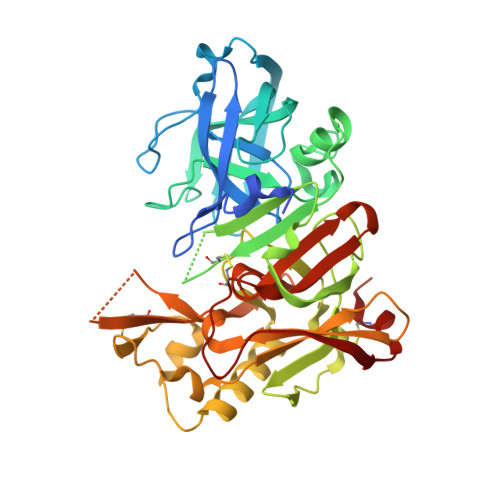Identification of a small molecule nonpeptide active site beta-secretase inhibitor that displays a nontraditional binding mode for aspartyl proteases.
Coburn, C.A., Stachel, S.J., Li, Y.M., Rush, D.M., Steele, T.G., Chen-Dodson, E., Holloway, M.K., Xu, M., Huang, Q., Lai, M.T., DiMuzio, J., Crouthamel, M.C., Shi, X.P., Sardana, V., Chen, Z., Munshi, S., Kuo, L., Makara, G.M., Annis, D.A., Tadikonda, P.K., Nash, H.M., Vacca, J.P., Wang, T.(2004) J Med Chem 47: 6117-6119
- PubMed: 15566281
- DOI: https://doi.org/10.1021/jm049388p
- Primary Citation of Related Structures:
1TQF - PubMed Abstract:
A small molecule nonpeptide inhibitor of beta-secretase has been developed, and its binding has been defined through crystallographic determination of the enzyme-inhibitor complex. The molecule is shown to bind to the catalytic aspartate residues in an unprecedented manner in the field of aspartyl protease inhibition. Additionally, the complex reveals a heretofore unknown S(3) subpocket that is created by the inhibitor. This structure has served an important role in the design of newer beta-secretase inhibitors.
- Department of Medicinal Chemistry, Merck Research Laoratories, West Point, PA 19486-0004, USA. craig_coburn@merck.com
Organizational Affiliation:

















